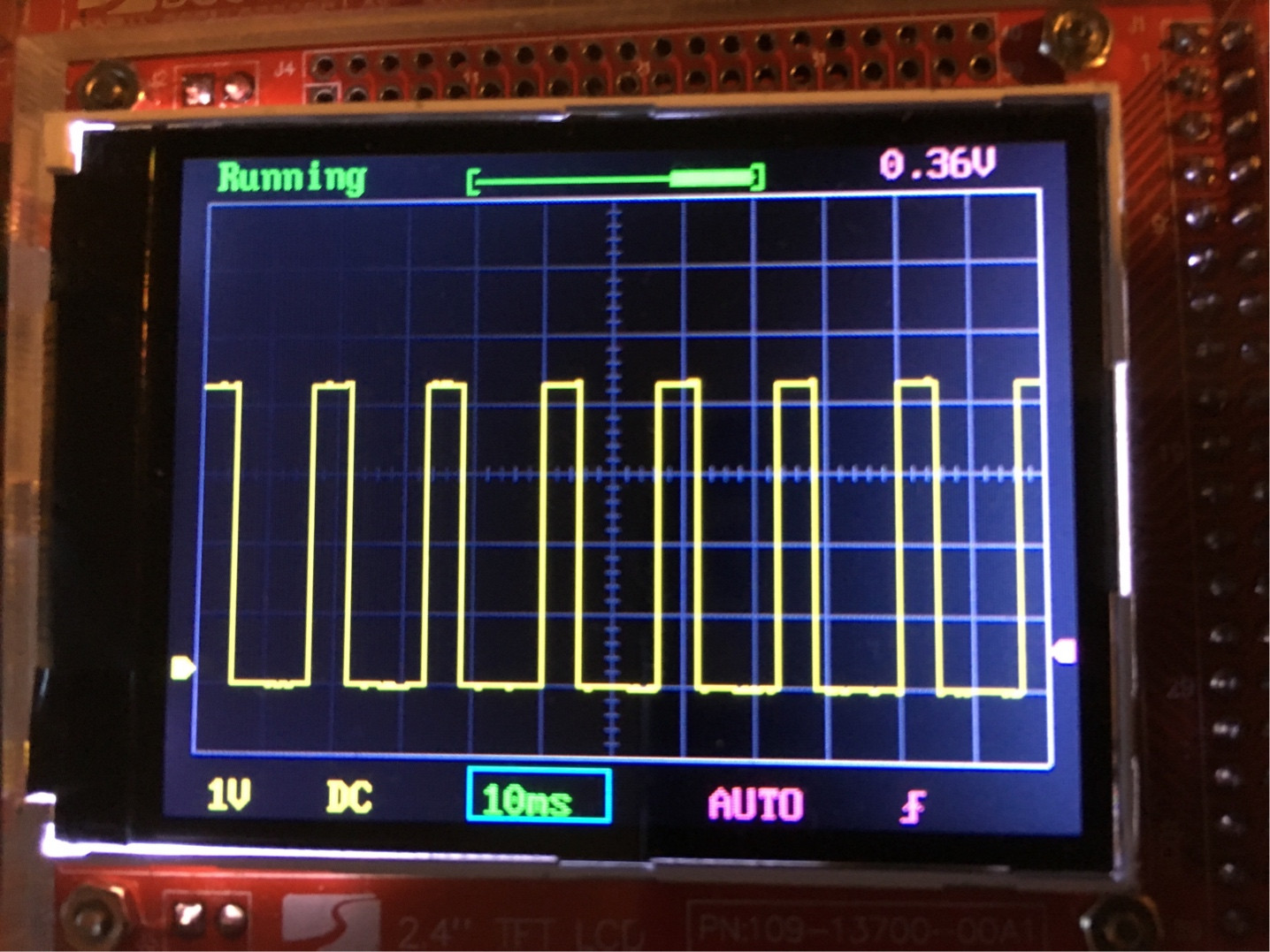I am using a DSO138 oscilloscope for learning electronics. It is not much, but it is very helpful for me at present.
I was setting up a 555 astable circuit. I noticed that it was triggering even though the circuit was not complete. I have included a picture of the circuit as well as the oscilloscope trace. The oscilloscope ground is connected to ground, and the oscilloscope positive is connected to pin 3 of the 555 (output).


The funny thing is that it does not trigger if my fingers are far from the white wire (which is connected to pin 2 of the 555, but nowhere else), but if they are close, I get the trace I included. If my fingers get really close to the white wire, the duty cycle goes to near 50%.
I am not sure what is going on. Can anyone help explain this?
I have also included a trace for when the oscilloscope ground is connected but the oscilloscope positive lead is not:

I assume this is noise in the power supply. I also assume it is related to the issue described above.
Any help would be much appreciated. Thanks in advance.

